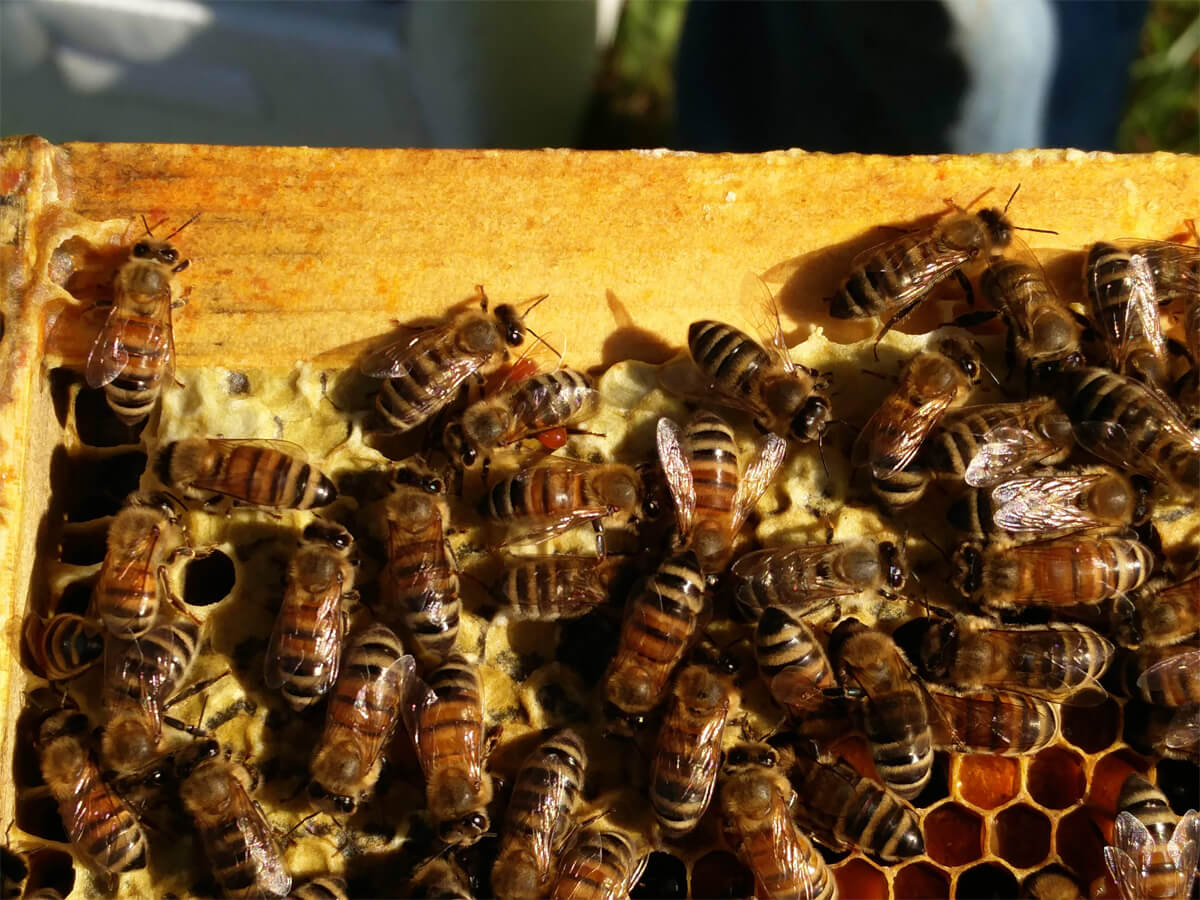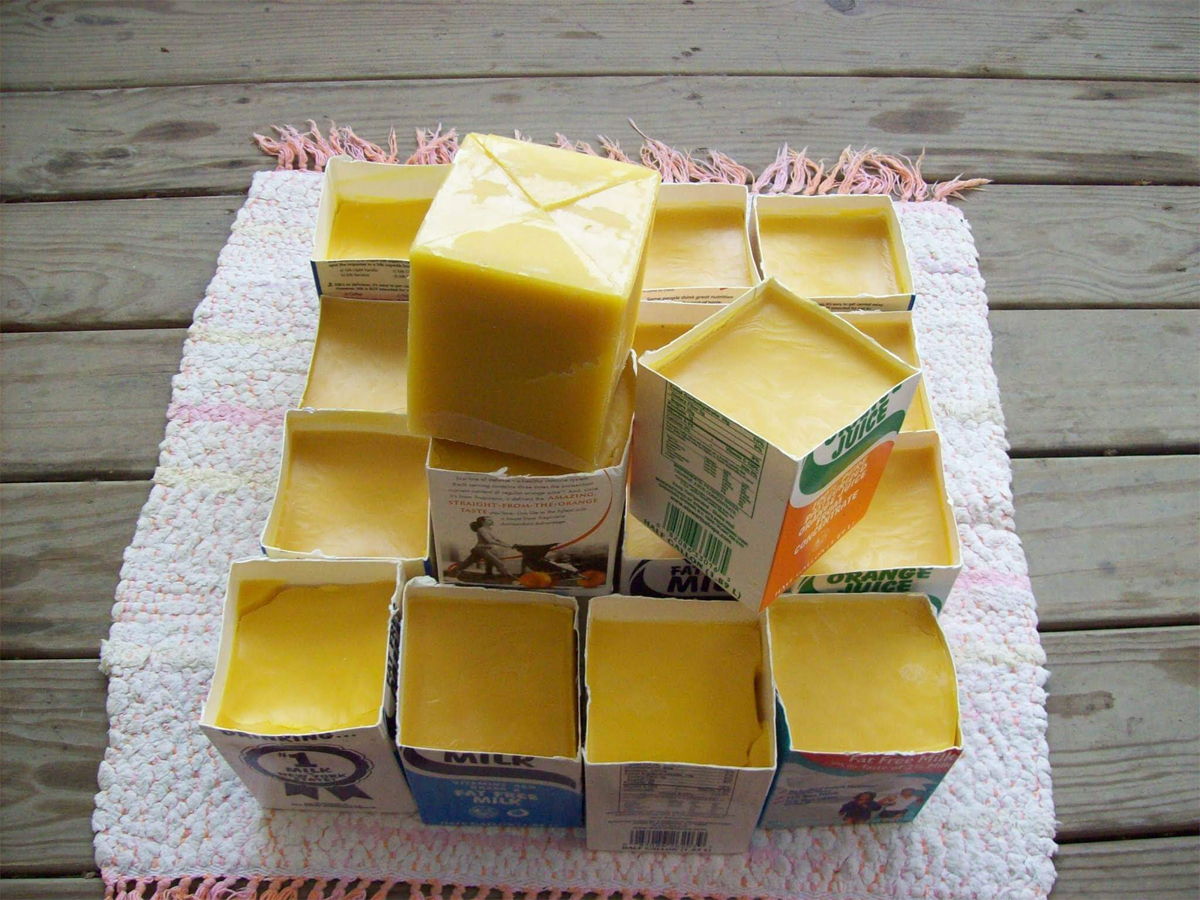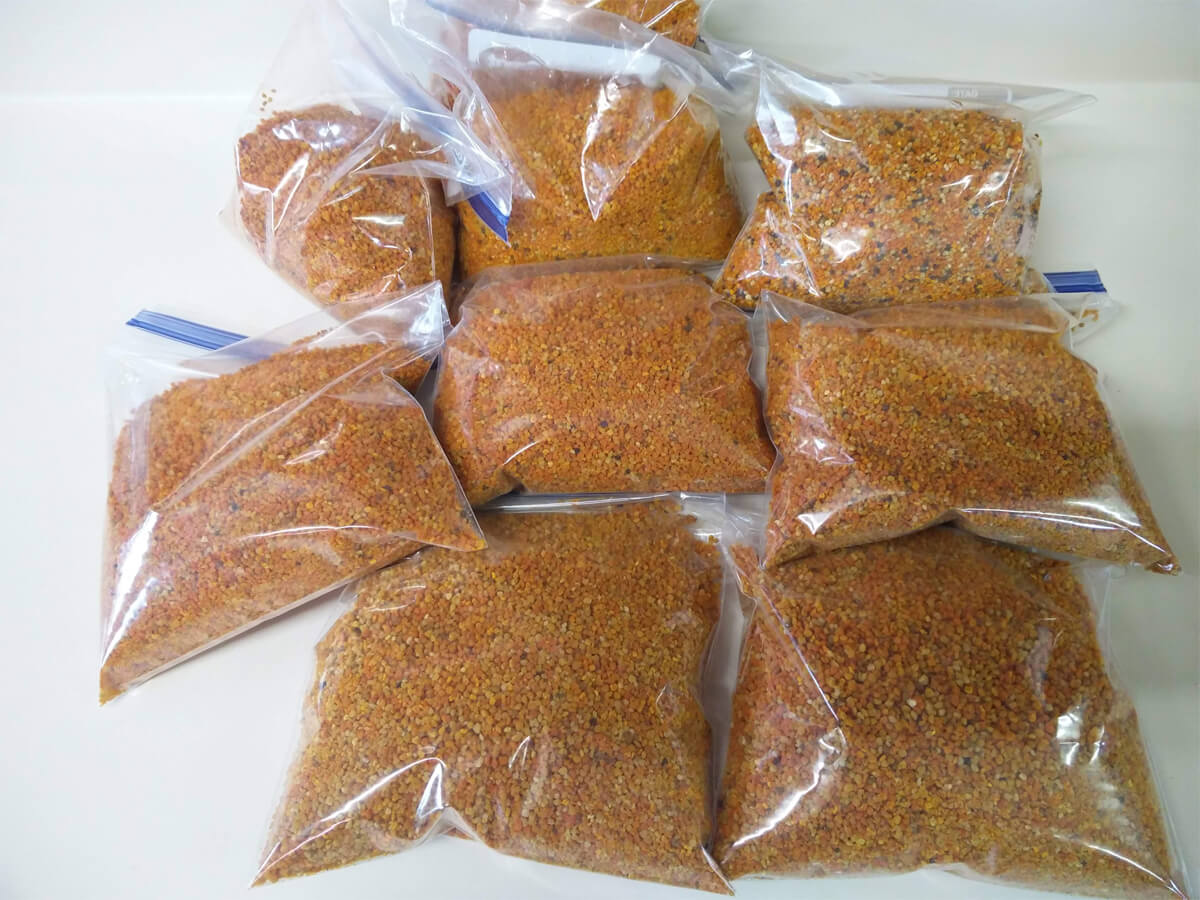With care and attention to bee health, you may find that your apiary is full of more bees than you know what to do with. What if you turn some of your hives into income generators by harvesting various products from your hives? You can earn money (and enjoyment) from so many different products from a hive of bees, a person might wonder:
Why do we call them honey bees?
Well, of course, it’s because bees make honey from flower nectar, and the typical consumer buys liquid honey in jars. For most people, that’s the only product that a bee colony makes. More educated consumers know about creamed honey, which is pure honey that has been forced to crystallize very rapidly until it is smooth and spreadable like peanut butter. The process to cream honey is precise, but not all that difficult.
Before there was liquid honey people bought honey in combs, which can still be obtained and eaten that way. There are numerous ways to produce comb honey: Ross Rounds and Hogg Halfcomb are two systems that have special equipment and need only a little work after the bees have finished with the combs. Cut comb honey is the opposite, it can be made with basic equipment but needs more processing and packaging. Chunk honey (comb honey placed in a jar of liquid honey) is a gorgeous way to sell smaller rectangles of comb honey. Some customers actually want to buy whole frames of comb. Learning the skills that go into producing comb honey will make you a better beekeeper overall, even if you still want to focus on harvesting liquid honey. But what else can these honey bees make for you?
Other common hive products
Pollen: Pollen can be collected with a Sundance Pollen Trap or other pollen trap designs. You might harvest a half pound of pollen per day in the second half of summer after the early season. Customers who buy pollen most often want it because they claim it helps their allergies. Some people want it because they want varied plant proteins in their diet or a fun new culinary ingredient. Trapping pollen will make you more attentive to your bees because only certain hives are strong enough to spare extra pollen for you. Small hive beetles love to eat pollen, so you’ll learn to guard it carefully. Make sure to empty your traps daily and freeze the pollen.
Royal jelly: This is the food worker bees make and feed to queen larvae while they develop, but some humans want to eat it, too! It can be produced using the same methods used to produce queens, but skipping the part where you let each new queen finish eating her jelly and growing up. About one-twelfth of a teaspoon of royal jelly can be scooped from each queen cell, which makes it a labor-intensive, but also a rare and prized hive product.
Propolis: Propolis is the combination of various plant resins that bees carry back home plus some beeswax. These sticky resins are carried home on the bees’ legs, the same way they carry pollen. They use propolis to fill cracks and varnish the inside of their home. People use this antimicrobial goo in tooth and mouth remedies, throat tinctures, and wound treatments. It is also used in wood finishes.

In this image you can see the propolis on a bee's legs!
Beeswax: Young worker bees make beeswax flakes from glands on the undersides of their abdomens, then they build the whole architecture of the colony’s nest from it, from the pantry to the nursery to the dancefloor. We use it to make candles of course, but it can also be used to make various cosmetic products. Due to the high demand for beeswax, it can be easily sold as simple molded blocks if you’re not very crafty yourself. Beeswax candles usually sell for about twice the price of the same weight as honey.

Here is a simple way to make molded blocks of beeswax, ready for sale or your own use.
The products mentioned above are just the beginning! Your colonies can also produce things other beekeepers need (and may be willing to pay you for) too.
Hive products for beekeeping customers
Frames of empty drawn comb: If you need empty comb but don’t have it, you may have wished someone would sell you some. Could you make money by selling newly-drawn comb? With care, feeding, and frequent attention, a hive or even a nuc can make quite a bit of comb each season. You need to be mindful of the risk of disease transmission between colonies, but even so, there is a market for comb. (Unless someone decides to buy food-safe synthetic BetterComb instead.)
Frames of brood: As long as they’re kept warm in transit, frames of brood can be inserted into a struggling bee colony to boost its health and population. Consider the time and energy needed to create newly drawn comb from foundation. Now add the time and effort needed for each cell to be filled with a well-fed larva. Now reflect that an entire deep frame could have 6,500 worker brood growing up inside it. That means 6,500 bees popping out of their cells soon! (As a comparison, a 3 lb. package has about 12,000 bees in it.) What should the price of a deep frame of brood be? Surprisingly, it normally costs only about $20 if you can find a beekeeper willing to spare it.
Nucleus colonies (Nucs): If you have developed the necessary beekeeping skills and amassed a lot of comb, you could create and sell nucs. Nucs that you set up with your comb, bees, brood, and queens (either bred by you or purchased and installed), may be the best way to earn money from hives. The downside: making nucs in a serious way will reduce the honey crop your hives will manage to produce. The upside: no extractor or bottles needed for that pesky, messy honey, since you’re in the nuc business now.
Queens: If you ever decide to raise your own queens, what do you do with all of those extra royals? Maybe your queen customers will stop at your place and you can send them home with the mated queen and some nurse bees in a coffee cup with pinholes in the lid. Or you could use proper queen cages (purchase queen-rearing supplies here). Either way, this will require picking up each queen as well as six or seven attendant workers to insert them into the queen cage. After developing those skills on top of raising queens, you’ll have such confidence in yourself as a beekeeper!
Queen cells: These sell for less than mated queens, but that’s because instead of you, it’s the customer who must deal with making and managing queen mating nucs. When selling queen cells, special care is necessary for maintaining steady warmth and humidity during transportation. Queen cells are normally not shipped, since the young queens inside are quite delicate.
Of course, if you become an expert at producing nucs and queens, you could save your own money instead of selling them to others. What if you never spent money on bees again?
Services that you can provide as a beekeeper
Cutouts: An unusual way to earn money as a beekeeper is removing colonies from buildings. These jobs are called “cutouts” and require knowledge of construction/deconstruction methods plus the how-to of actually getting all the bees and comb out of a ceiling, wall or floor. Click here to watch our video on how to perform a cutout.
Pollination: Besides honey, the average person probably thinks of pollination when they think of honey bees. Pollination services for orchards or farms with berries, pumpkins, apples, almonds, etc. can be arranged ahead of the bloom season. This service involves moving just the brood chamber into and then away from the farm at the right time, so it’s nothing to jump into casually without serious thought. However, good money can be made taking on pollination contracts, on a large scale, or even on a small one if you have a farmer looking for just a few hives to help their crops.
Stings: Stings (often provided as boxes of a few hundred adult bees and a small comb) are sought after by people to do their own sting therapy. Stings increase the circulation to the area that is stung and the venom triggers immune responses that can affect the body. Some people believe these sting reactions can help them manage symptoms of MS, arthritis, wound healing, and more, and they may be willing to pay you to provide the bees they want to use.
Prioritize the products that you want to produce
One hive won’t be able to produce 2 buckets of honey, 4 nucs, 12 pounds of pollen, 25 pounds of comb honey, a batch of queens, and all the rest. Easing into it, and diversifying what your hives are asked to produce is probably the best plan when taking more from your hives than you have taken in the past. Each product harvested affects the colony’s ability to produce the others, and healthy bees are the basis of it all. Also, each product comes with its own expenses, whether that’s equipment to produce it, or packaging that is sold with it. Producing anything from the bees’ bodies will probably mean extra feeding, whether it’s syrup to get comb made, or protein patties to encourage brood growth for nucs.
The most valuable product a bee hive can produce
But what’s the most valuable and useful product of the hive? The knowledge you gain after years of keeping bees is itself a product, and trying to make each of the products above will give you even more experience. That knowledge will let you mentor a newer beekeeper, and though this is quite often a volunteer job, it also can be a money earner depending on the student’s needs and wants.
Presentations about bees: Presentations for non-beekeepers (think garden clubs, library programs, or elementary school classes) are always popular. This sort of thing is great if you bring along an observation hive (if you’ve learned how to work with one). After doing some smaller gigs like this, you might progress to giving paid talks or classes at beekeeping clubs or larger beevents. You might even get a job at a beekeeping supply company!



